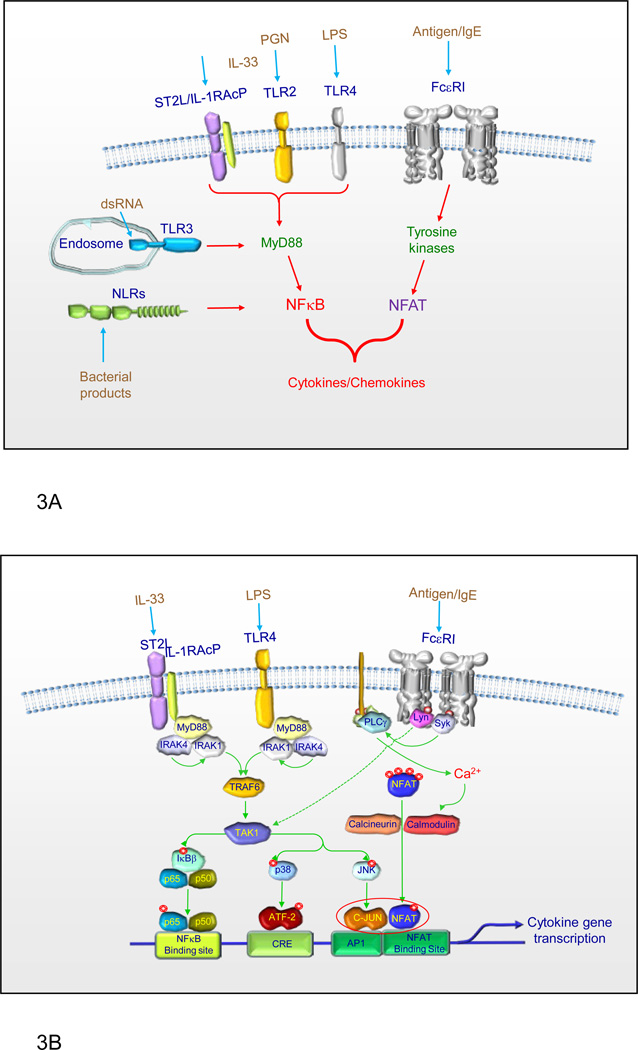Figure 3.
Interaction of pathogen recognition and ST2 receptor systems with FcεRI leads to substantial enhancement of production of cytokines and chemokines. Panel A. Mast cell express receptors for IL-33 (ST2), various Toll-like receptors (TLRs) of which three are shown, and NOD-like receptors (NLRs) (see Section IIID). All these receptors act through the MyD88 to strongly activate the NFκB pathway. As discussed in Section IIID, the NFκB pathway is only weakly activated by low concentrations of antigen that barely stimulate degranulation but can still stimulate the NFAT pathway which ligands for ST2, TLRs, and NLRs do not. Both NFκB and NFAT are key regulators of cytokine gene transcription. Consequently cytokine production is amplified. As shown in more detail in panel B, additional amplification occurs at the level of the kinase TAK1 to enhance activation of the p38 and JNK MAP kinases and their downstream targets ATF2 and the AP1 component, c-Jun. A third level of amplification occurs through co-operative interaction between AP1 and NFAT.18, 19 The calcineurin inhibitor, cyclosporine A, effectively blocks the NFAT pathway as well as cytokine production. The intermediate signaling steps between FcεRI and TAK1 is not determined and is indicated by the dashed line.

